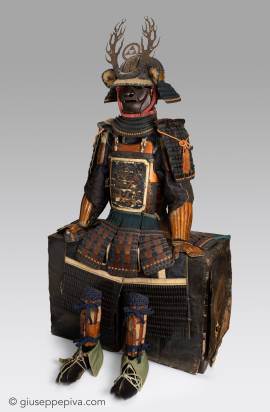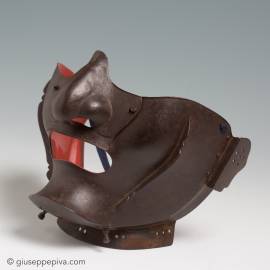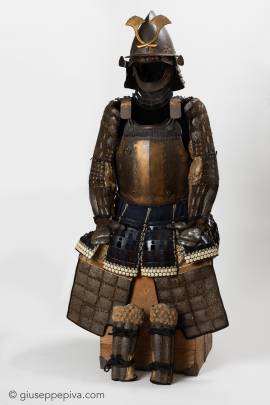PERIODMid Edo period (1615-1867), 18th century EXHIBITIONS"Samurai - Passato e Presente", Novara 2012LITERATUREG.Piva - S. Verrina, Samurai - Passato e Presente, cat. A2, Novara 2012 This authentic samurai armor of tosei gusoku type brings the coat of arms (kamon) with fish scale (uruko) design used by the Hirano clan, daimyō of Tawaramoto in Yamato province. The twelve-plates kabuto (helmet) of "pumpkin" shape (akoda-nari) is typical of this region, richly decorated with byakudan gold lacquer and...
WORKS FOR SALE
Half mask for samurai armorLate Edo period (1615 - 1867)-19th centurySigned: MunechikaMyōchin school The severe expression and the lack of wrinkles denotes the ryubu, or "martial". typology.
Nanban Tosei GusokuIncorporating a cabasset helmetEarly Edo period, 16th-17th century European armor was brought into Japan through trade with Spain and Portugal in the 16th century. With the introduction of firearms, the Japanese would, in fact, imitate those suits of armor, designed to deflect bullets, and began producing them in Japan, which were collectively called nanban (“Southern barbarian”) indicating a foreign origin.This rare composite authentic Japanese samurai armor incorporates interesting elements made in this style as well as an original European helmet...
About japanese armor
Copyright © 2016 - giuseppe piva - VAT: 05104180962










